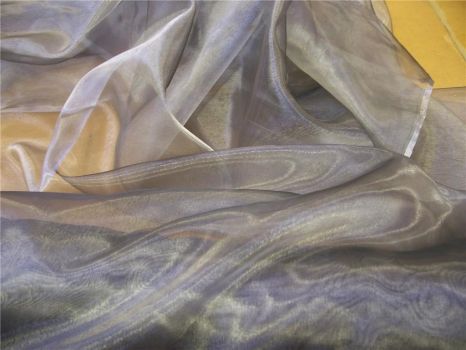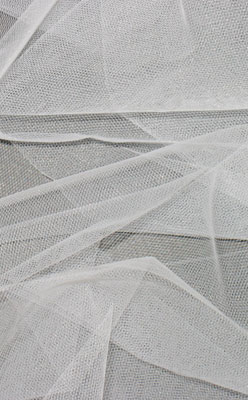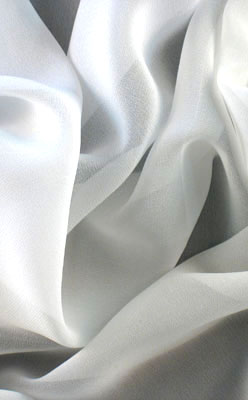Fabric Research
Organza:
Organza is a thin, plain weave, sheer fabric traditionally made from silk, the continuous filament of silkworms. Nowadays, though many organzas are woven with synthetic filament fibers such as polyester or nylon. Silk organza is used for bridalwear and eveningwear. In the interiors market it is used for effects in bedrooms and between rooms. http://en.wikipedia.org/wiki/Organza
This material is too stiff, but the matte organza had exactly the right level of transparency and came in a variety of different colours. Unfortunately it just wouldn’t be stretchy enough.
Tulle:
Tulle is a lightweight, very fine netting, which is often starched. It can be made of various fibres, including silk, nylon, and rayon. Tulle is most commonly used for veils, gowns (particularly wedding gowns), and ballet tutus. http://en.wikipedia.org/wiki/Tulle_netting
This was almost what we were looking for but the gaps in the mesh are too prominent and would have created a fish-net-tights look in the images, which is associated with a whole load of other things that we don’t want in our images.
Chiffon:
Under a magnifying glass it resembles a fine net or mesh which gives chiffon some see-through properties. Chiffon is most commonly used in evening wear, especially as an overlay, giving an elegant and floating appearance to the gown. It is also a popular fabric used in blouses, ribbons, scarves and lingerie. Like other crêpe fabrics, chiffon can be difficult to work with because of its light and slippery textures. Due to this delicate nature, chiffon must be hand washed very gently.[1] http://en.wikipedia.org/wiki/Chiffon_%28fabric%29
This is the same material from the 1st shoot, but its not a realistic option for the 2nd shoot as we need a much larger piece of fabric, and this material can run at £11/15 per meter. It’s also not as stretchy as the nylon micro mesh and much more delicate.
Nylon micro mesh:
This was the fabric we chose for the 2nd shoot as it was both stretchy and translucent. It’s really robust and can be pulled around without tearing. The wholes in the mesh are small enough that they won’t create a fish-net-tights look in the images, and the fabric is thin enough to give a good level of transparency. It also becomes more transparent the more its stretched, and more opaque when bunched up so this could be an interesting effect to play with at the shoot.





